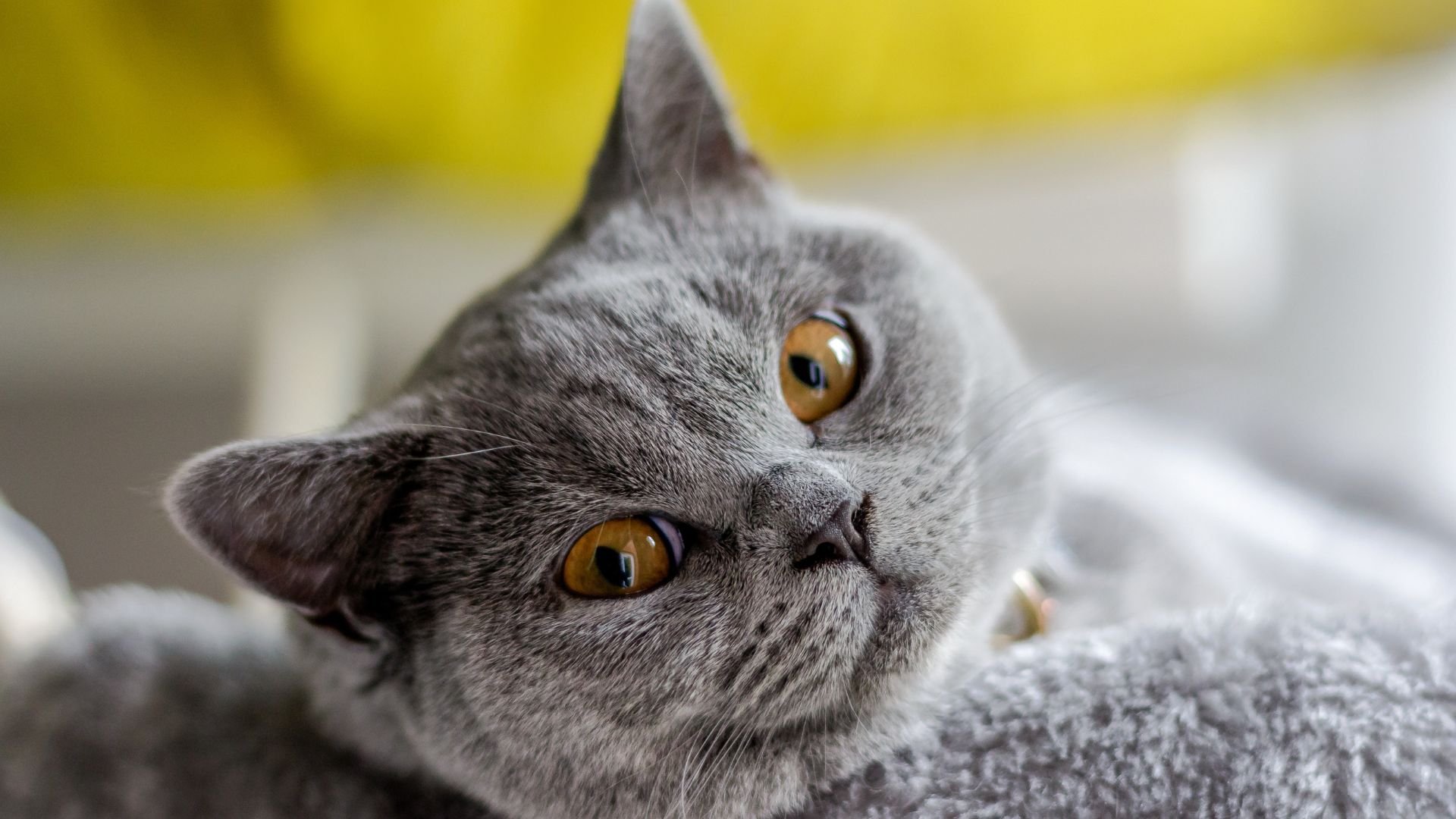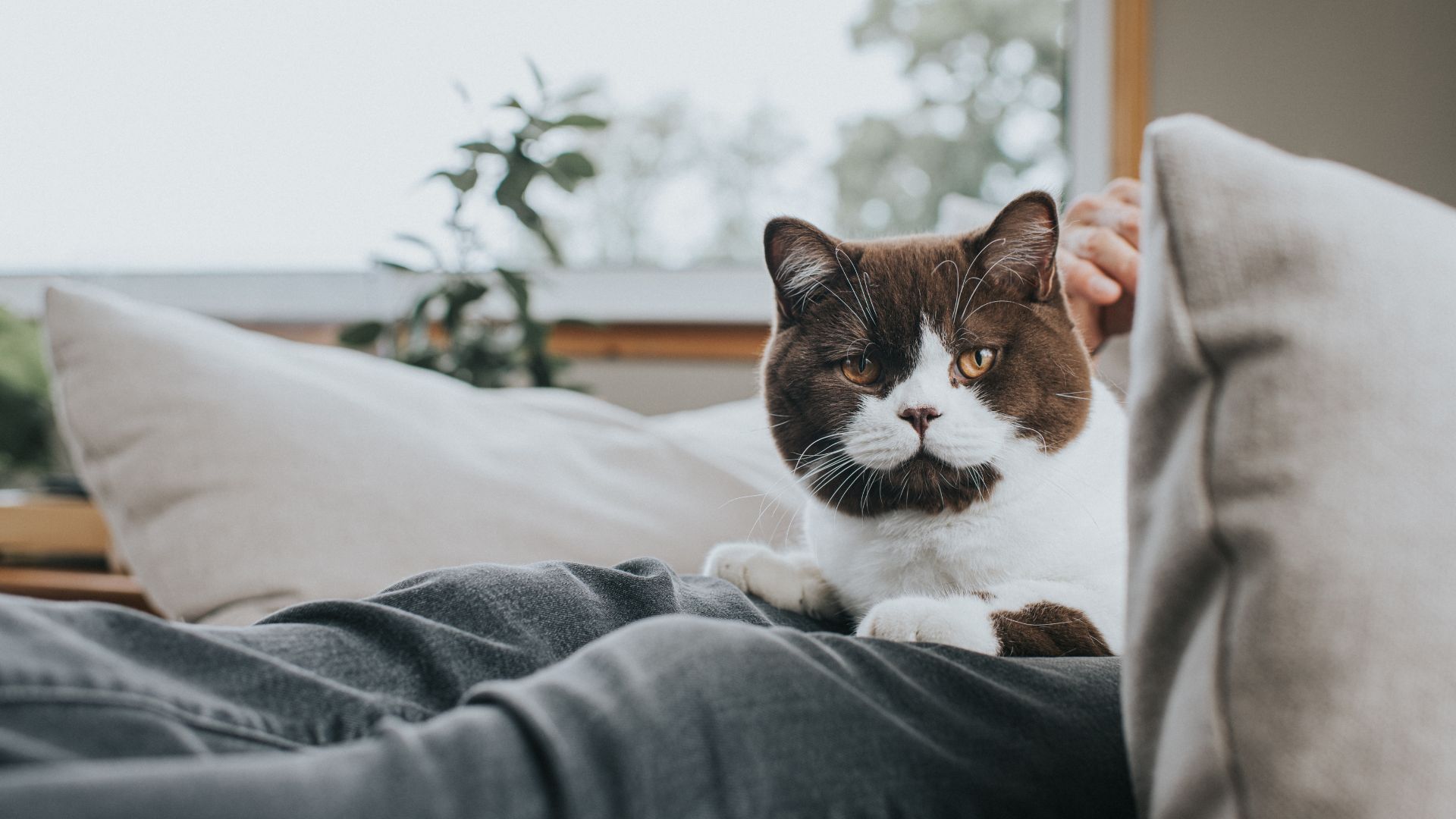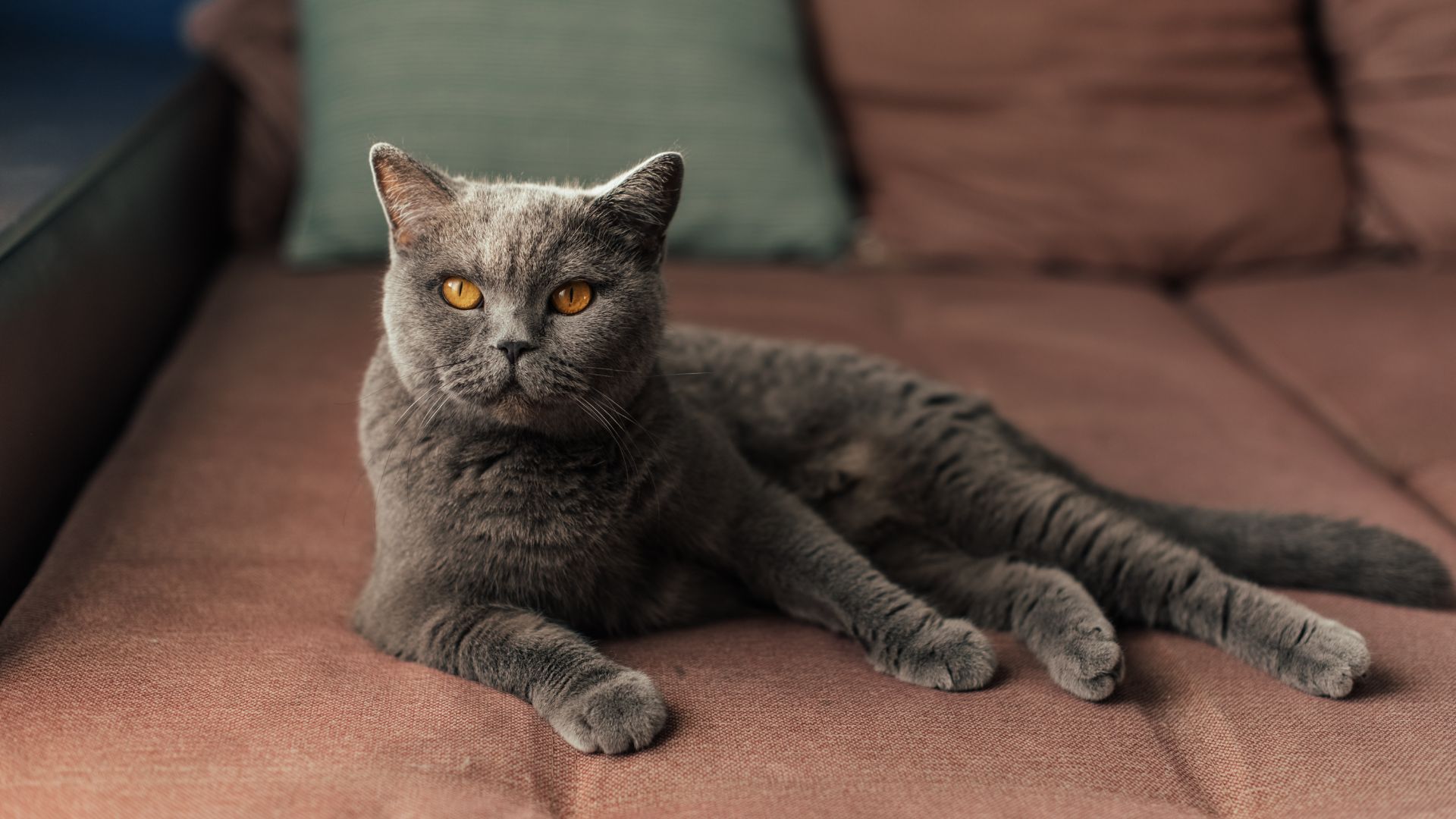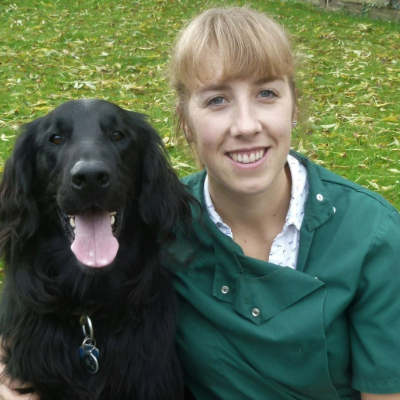British Shorthair cats are calm, collected and composed felines that will suit quiet homes
Coming with a thick and dense coat and a calm and docile temperament – discover whether a British Shorthair cat is the right fit for your fur family


Other names: British Blue or British
Life expectancy: 12–20 years
Size: 12–14in (height), 22–25in (length) and around 7–17 lb
Coat: Blue, black, cream or chocolate, including solid, tabby, or tortoiseshell
Eye colour: copper and orange
Temperament: affectionate, intelligent, calm, easygoing and undemanding
Origin/native country: England
Legend has it that British Shorthair cats date back to the first century AD when the Romans relied on them for pest control in their camps. If this is to be believed, the British Shorthair cat is one of the oldest cat breeds in the world.
However, by the early 20th Century, the British Shorthair – which was formerly called the British Blue due to being bred for their loveable blue-gray coloring – nearly became extinct. It was not until the 1970s that the breed fully recovered and today the British Shorthair is the sixth most popular cat in the US.
This fact makes sense when you consider how adaptable these heavy-muscled fur friends are. Along with being suitable for homes with children and other pets, the British Shorthair will enjoy spending time with their human counterparts just as much as they will be in entertaining themselves.
We spoke to vet Dr Rebecca MacMillan to discover other key traits, characteristics and the grooming needs of this beautiful, big-bodied breed.
Are British Shorthair cats hypoallergenic?
No, British Shorthairs are not considered to be a hypoallergenic cat breed.
“They produce normal amounts of allergens and have a thick coat that sheds heavily all year round,” Dr MacMillan explains. “Most British Shorthaired owners fully admit their homes usually have a fine layer of cat hair!”.
Therefore, brushing your cat on a regular basis can help you keep balls of fur under control and stop them from appearing sporadically around your home.
Get the best advice, tips and top tech for your beloved Pets
If you are considering getting a pet, but want to avoid fur all over your floors, non-shedding cats are the perfect choice.
How long do British Shorthair cats live?
British Shorthairs can live upto 12–15 years of age, with the right care.
“However, there are always exceptions to this with some cats only living until the age of nine and others making it to 20,” Dr MacMillan notes.
Are British Shorthair cats friendly?
British Shorthairs are a laid-back and friendly cat breed.
“They are quite happy having a play and a cuddle, but they are not attention-seeking,” Dr MacMillan says. “They are less needy and demanding than many other cat breeds.”
So while they enjoy companionship, they are also quite happy doing their own thing. “This independent cat will pop back to check on you at regular intervals, but they don’t tend to be a lap cat,” explains Dr MacMillan.
British Shorthairs also get on really well with other pets. So you won't need to worry about how to keep the peace in a multi-cat household if you have a British Shorthair because these chilled-out cuties get along well with everyone, including cat-friendly dogs.

How much grooming does a British Shorthair cat need?
British Shorthairs require regular brushing to remove loose hairs, otherwise, they will end up all over your home.
“Their plush coat is short and very dense, so it doesn’t easily mat,” Dr MacMillan explains. “Brushing at least once a week should help keep on top of things.”
Dental-wise, regular oral care is also advised to keep tartar and gum inflammation at bay.
How much exercise does a British Shorthair cat need?
British Shorthairs aren’t one of the most active and high-energy cat breeds. Therefore, around 20–30 minutes of active play should be enough to keep them happy.
“This can be broken down into several short periods of play,” Dr MacMillan recommends.
But that’s not to say that they don’t love to play with the best cat toys. For example, a British Shorthair will certainly enjoy chasing a toy mouse when they’re looking to burn off some energy.
Wisdom Panel Cat DNA Test | Amazon
Not sure exactly what breed your cat is? This kit screens for 70+ breeds, 45 genetic health insights and 25+ physical traits – because knowing every detail about your cat helps you understand how best to care for them.
British Shorthair health problems
Sadly, British Shorthairs are susceptible to a few health complaints, including some of the most common illnesses in cats.
“Like many pedigree cats they can suffer from hypertrophic cardiomyopathy (HCM),” Dr MacMillan says. “This heart disease causes thickening of the muscular walls, stopping blood from being effectively pumped around the body. It can also lead to clot formation and sudden death.”
Unfortunately, there is no cure for this condition, but some treatment options may help.
Haemophilia B is another illness to add to the list.
“This blood clotting disorder can cause symptoms like bleeding from the gums and nose, bruising, blood in the urine or stools, and excessive bleeding after trauma or surgery,” Dr MacMillan explains.
British Shorthairs can also suffer from polycystic kidney disease (PKD), which is a condition commonly associated with Persian cats.
“Affected cats are born with cysts in their kidneys that gradually increase in size over time,” the vet explains. “This can eventually lead to kidney failure.”
Again, Dr MacMillan notes that there is no cure for this.
“But buying your kitten from a reputable breeder who performs all the recommended health screens will help increase your chances of owning a healthy cat,” she says.
Dr MacMillan says many British Shorthairs will also develop a degree of dental disease.
“They are prone to excessive tartar buildup and gum disease,” she notes. “Regular oral care is recommended from an early age, with a gradual introduction to tooth brushing and cat-safe toothpaste.”
How much does a British Shorthair cost?
Location, age and pedigree will all influence how much you can expect to pay for a British Shorthair cat. But typically speaking, these cats are on the expensive side, costing anywhere between $1,500 to $3,000. This makes them a similar price to other popular and well known cat breeds like the Bengal, Maine Coon and ragdoll.
Should I get a British Shorthair?
Overall, British Shorthairs would be a great choice for novice or older pet owners due to their laid-back nature and moderately active care needs.
“They are friendly and adaptable, but well suited to a quiet and calm home,” flags Dr MacMillan.
These pretty independent cats should also be fine being left alone for short periods of time, which some owners might find helpful to know.
British Shorthair Cats | Amazon
This complete owner’s guide covers all aspects of caring for your pet, including what to consider before buying, daily care, personality, health, temperament, diet, breeders, the equipment you need, along with your responsibilities as an owner.
Read next: Fun facts about British Shorthair cats

Having graduated in 2009 from the Royal Veterinary College in London as a veterinary surgeon, Rebecca is highly experienced in first opinion small animal practice, having done a mixture of day-to-day routine work, on-call emergency duties and managerial roles over the years. Rebecca recently achieved a BSAVA postgraduate certificate in small animal medicine (with commendation).
Rebecca writes on various feline and canine topics, including behavior, nutrition, and health. Outside of work and writing she enjoys walking her own dog, spending time with her young family and baking!
Edited by Georgia Guerin.
This feature was last updated in June 2025 by Becks Shepherd.

Becks Shepherd is a lifestyle journalist who has worked with titles such as Tom's Guide, Marie Claire, and Fit and Well.
In addition to this, she’s a pet writer with nearly a decade of editorial experience across digital and print media. A devoted “dog aunt” and lifelong animal lover, Becks brings a personal touch to her pet content—whether she’s testing the latest dog gear or digging into behavioral tips.
She works closely with veterinary experts to ensure factual accuracy and is currently exploring animal care certifications to deepen her knowledge. Her work has appeared in leading outlets across health, wellness, and pet care spaces.


